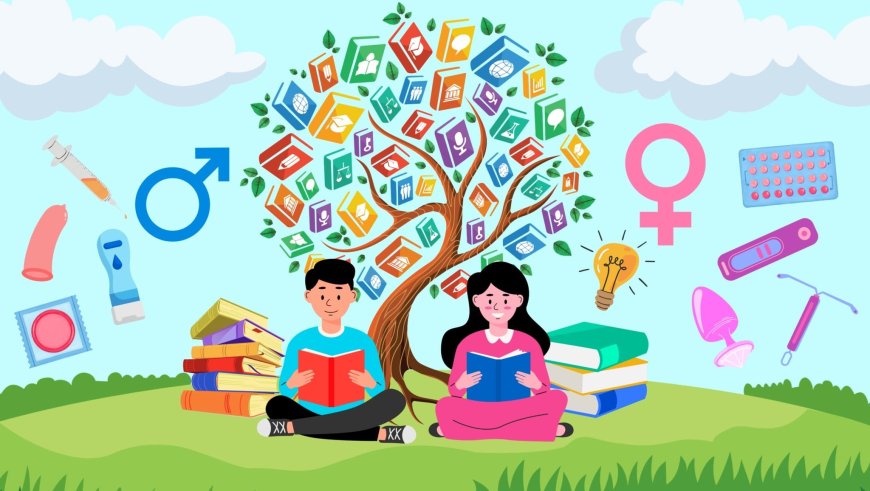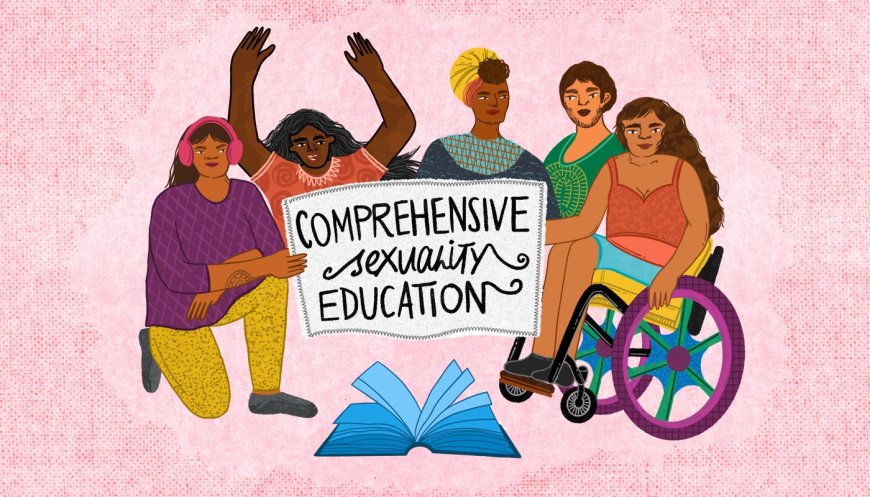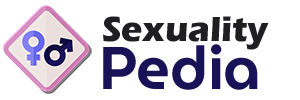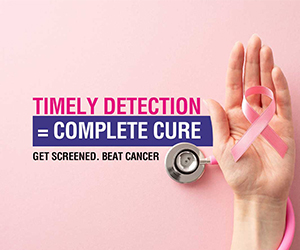Accessible Sexual Health Education: Language for All Abilities and Backgrounds
Discover how to make sexual health education accessible through clear, inclusive language that serves people of all abilities, literacy levels, and cultural backgrounds.

Sexual health education serves as a fundamental human right that must be accessible to people of all abilities, literacy levels, cultural backgrounds, and learning styles. Yet traditional approaches to sexual health education often create barriers that exclude significant portions of the population from receiving vital health information. Creating truly accessible sexual health education requires moving beyond one-size-fits-all approaches to develop inclusive materials and communication strategies that meet diverse learner needs while maintaining accuracy and effectiveness. This comprehensive approach benefits entire communities by ensuring that everyone has the knowledge and skills needed to make informed decisions about their sexual health and wellbeing.
Understanding Accessibility in Health Education
Accessibility in sexual health education encompasses multiple dimensions including physical accessibility, cognitive accessibility, linguistic accessibility, and cultural accessibility. Each dimension requires specific considerations and adaptations to ensure that educational materials and programs truly serve diverse populations.
Physical accessibility involves creating materials and programs that can be accessed by people with various physical disabilities, including visual impairments, hearing impairments, mobility limitations, and fine motor skill differences. This requires attention to format options, presentation methods, and environmental considerations that accommodate diverse physical needs.
Cognitive accessibility addresses the needs of people with intellectual disabilities, learning differences, traumatic brain injuries, and other conditions that affect information processing. This involves using clear language, logical organization, repetition of key concepts, and multiple presentation formats to support comprehension and retention.
Linguistic accessibility ensures that sexual health education is available in multiple languages and adapted for different levels of English proficiency, while also considering cultural contexts that influence how health information is understood and applied within different communities.
Cultural accessibility recognizes that sexual health education must be relevant and appropriate for diverse cultural backgrounds, religious beliefs, and value systems while maintaining scientific accuracy and supporting informed decision-making across all communities.
Plain Language Principles
Plain language represents a foundational approach to accessible sexual health education that benefits all learners while being essential for those with limited literacy or English proficiency. Implementing plain language principles requires systematic attention to word choice, sentence structure, and information organization.
Word choice in accessible sexual health education favors common, familiar terms over technical jargon while maintaining medical accuracy. When technical terms are necessary, they should be clearly defined and consistently used throughout materials. For example, rather than using "sexually transmitted infections," materials might use "infections you can get from sex (STIs)" to provide both clarity and technical accuracy.
Sentence structure should prioritize clarity and directness, using active voice and avoiding complex grammatical constructions that can confuse readers. Short sentences generally improve comprehension, though varying sentence length can maintain reader engagement while supporting understanding.
Information organization follows logical patterns that help readers understand relationships between concepts and find specific information quickly. This includes using clear headings, bullet points, and numbered lists to break up text and highlight important information.
Reading level considerations ensure that materials are written at appropriate literacy levels for their intended audiences. Many accessible sexual health materials target reading levels between 6th and 8th grade to accommodate the majority of adults while remaining informative and respectful.
Visual Design and Accessibility
Visual design significantly impacts the accessibility of sexual health education materials, requiring attention to layout, typography, color use, and imagery that supports comprehension and inclusion.
Typography considerations include font selection, size, and spacing that support readability for people with various visual abilities and processing differences. Sans-serif fonts generally provide better readability than serif fonts, while adequate font size (typically 12 points or larger) and line spacing improve accessibility for many readers.
Color and contrast must meet accessibility standards that ensure content is visible to people with color blindness and low vision. This includes avoiding color as the only way to convey important information and ensuring sufficient contrast between text and background colors.
Layout and white space help organize information visually while reducing cognitive load for all readers. Cluttered layouts can be particularly challenging for people with attention differences or processing difficulties, making clean, organized design essential for accessibility.
Imagery and graphics should be inclusive, representing diverse populations while supporting rather than distracting from key messages. All images should include alternative text descriptions for screen readers used by people with visual impairments.
Accommodating Learning Differences
Sexual health education must accommodate diverse learning styles and abilities, including various forms of neurodiversity that affect how individuals process and retain information.
Learning disabilities such as dyslexia require specific accommodations including audio versions of materials, increased processing time, and multiple format options that allow learners to access information through their strongest channels.
Attention differences, including ADHD, benefit from materials that break information into smaller chunks, use engaging visuals, and provide clear organization that helps maintain focus on key concepts.
Autism spectrum conditions may require accommodations such as explicit instruction, consistent organization, and preparation for topics that might cause anxiety or sensory issues. Materials should avoid idioms and figurative language that might be misunderstood.
Intellectual disabilities require materials that use concrete rather than abstract concepts, provide clear examples, and include opportunities for practice and repetition. Information should be presented in logical sequences with clear connections between related concepts.

Multilingual and Cross-Cultural Accessibility
Creating accessible sexual health education for diverse linguistic and cultural communities requires more than simple translation—it demands cultural adaptation that considers different frameworks for understanding health, sexuality, and relationships.
Translation quality significantly impacts accessibility, requiring professional translators with expertise in both health terminology and cultural contexts. Direct translation often fails to convey intended meanings when concepts don't exist equivalently across languages and cultures.
Cultural adaptation involves modifying examples, scenarios, and recommendations to reflect the experiences and values of different cultural communities while maintaining health accuracy and effectiveness. This process requires deep cultural knowledge and community input to ensure appropriateness and relevance.
Community involvement in developing multilingual materials ensures that translations are not only linguistically accurate but also culturally appropriate and accessible to their intended audiences. This includes reviewing materials with community members and incorporating feedback about language preferences and cultural considerations.
Regional and dialectical differences within languages require attention to ensure that materials are accessible to specific linguistic communities rather than assuming that all speakers of a language share identical vocabulary and expressions.
Technology and Digital Accessibility
Digital sexual health education materials must meet accessibility standards that ensure usability for people with disabilities while taking advantage of technology's potential to support diverse learning needs.
Screen reader compatibility requires proper coding and structure that allows assistive technology to navigate and read content effectively. This includes using heading structures, alternative text for images, and descriptive link text that provides context for users who cannot see visual elements.
Audio and video accessibility includes captions for deaf and hard-of-hearing users, audio descriptions for blind and low-vision users, and transcript options that provide multiple ways to access multimedia content.
Interactive elements must be navigable using keyboard controls rather than requiring mouse use, ensuring that people with various motor abilities can participate fully in digital learning experiences.
Mobile accessibility ensures that sexual health education can be accessed on various devices, particularly important for reaching underserved communities who may rely primarily on mobile technology for internet access.
Addressing Sensitive Topics Accessibly
Sexual health education involves inherently sensitive topics that require careful attention to accessibility considerations while maintaining effectiveness and appropriateness across diverse populations.
Trauma-informed approaches recognize that many learners may have experiences of sexual trauma that affect their engagement with sexual health education. Accessible materials should include content warnings, provide choice in participation, and offer multiple ways to access information that allow learners to control their exposure to potentially triggering content.
Age-appropriate accessibility ensures that materials designed for different age groups accommodate the developmental and cognitive abilities typical of their target audiences while remaining inclusive of learners with disabilities or differences.
Cultural sensitivity in addressing sensitive topics requires understanding how different communities approach discussions of sexuality while ensuring that all learners receive necessary health information regardless of their cultural background.
Safety considerations include providing information about resources and support services in accessible formats, ensuring that all learners know how to seek help if needed.
Professional Development and Training
Creating accessible sexual health education requires training educators, healthcare providers, and program developers in accessibility principles and implementation strategies.
Accessibility awareness training helps professionals understand the barriers that inaccessible materials create while providing practical skills for developing inclusive educational approaches.
Universal Design for Learning principles provide frameworks for creating educational materials that are accessible to diverse learners from the outset rather than requiring later accommodations.
Cultural competency training ensures that accessibility efforts include cultural responsiveness and community engagement rather than focusing solely on disability accommodations.
Evaluation skills help professionals assess the accessibility and effectiveness of their educational materials and programs while making continuous improvements based on learner feedback and outcomes.
Community Engagement and Co-Design
Truly accessible sexual health education requires meaningful engagement with the communities it serves, including people with disabilities, diverse cultural communities, and learners with various educational backgrounds.
Participatory design approaches involve community members as partners in developing educational materials rather than simply consulting with them after materials are created. This ensures that accessibility considerations are integrated throughout the development process.
Community advisory groups provide ongoing feedback about accessibility and effectiveness while helping to identify emerging needs and barriers within specific populations.
Peer education models can enhance accessibility by training community members to provide sexual health education using culturally appropriate language and approaches that resonate with their communities.
Feedback mechanisms should be accessible themselves, providing multiple ways for learners to share their experiences and suggestions for improvement.
Evaluation and Continuous Improvement
Assessing the accessibility and effectiveness of sexual health education requires evaluation approaches that accommodate diverse communication styles and abilities while measuring meaningful outcomes.
Accessible evaluation methods include surveys in multiple languages and formats, focus groups adapted for different communication needs, and alternative assessment approaches that don't rely solely on written responses.
Outcome measures should include both knowledge acquisition and practical application while considering the diverse ways that different learners demonstrate understanding and behavior change.
Continuous improvement processes should incorporate accessibility feedback while maintaining focus on health outcomes and educational effectiveness across all populations served.
Legal and Ethical Considerations
Accessible sexual health education must comply with relevant accessibility laws while addressing ethical considerations about health information access and equity.
Legal requirements such as the Americans with Disabilities Act in the United States establish minimum standards for accessibility while best practices often exceed these requirements to ensure meaningful access rather than mere compliance.
Ethical principles of health equity require that sexual health education actively address rather than perpetuate health disparities by ensuring that all populations have access to information needed for healthy decision-making.
Privacy and confidentiality considerations must account for diverse communication needs while maintaining appropriate protections for sensitive health information.

Future Directions and Innovation
Accessible sexual health education continues to evolve as new technologies, research findings, and community insights inform more effective and inclusive approaches.
Emerging technologies such as virtual reality, artificial intelligence, and adaptive learning systems offer new possibilities for personalized, accessible sexual health education that adapts to individual learner needs and preferences.
Research on accessibility and health education continues to provide evidence about effective approaches while identifying persistent barriers and innovative solutions.
Policy advocacy supports systemic changes that promote accessible sexual health education through funding requirements, educational standards, and community health initiatives.
The ultimate goal of accessible sexual health education is ensuring that every person, regardless of their abilities, background, or circumstances, has access to the information and skills they need to make informed decisions about their sexual health and to live healthy, fulfilling lives. This requires ongoing commitment to accessibility principles, community engagement, and continuous improvement in educational approaches that truly serve all members of our diverse communities.











